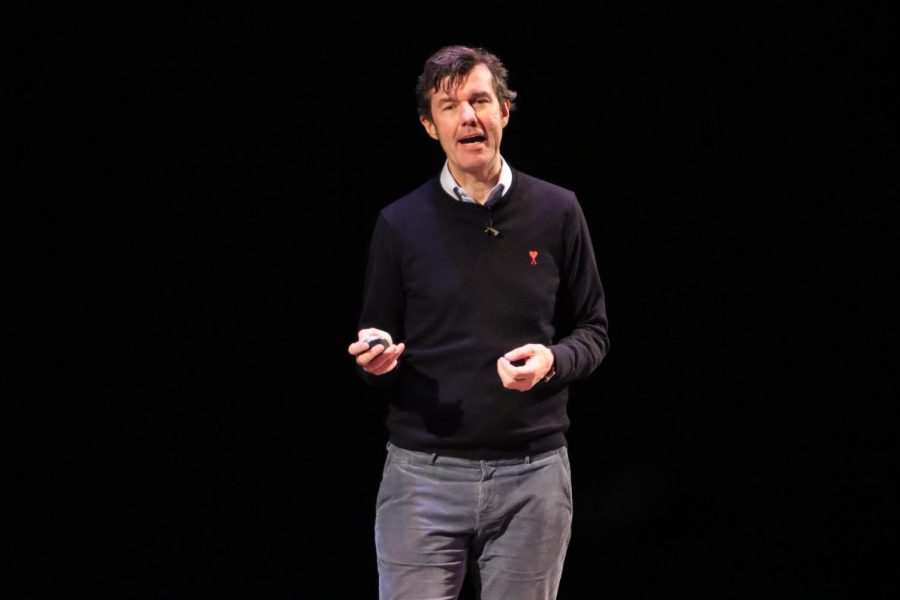Beauty isn’t always in the eye of the beholder
Stefan Sagmeister speaks on the importance of beauty at Young Auditorium.
March 9, 2020
Traveling artist and cofounder of a New York based design firm called Sagmeister & Walsh Inc., Stefan Sagmeister, came to the Young Auditorium on Tuesday, March 3 . Teaching the importance and relevancy of beauty in everyday life, Sagmeister explained by using examples from architecture, design and science, Sagmeister proved that beauty is no mere strategy.
“It is … very easy to learn about aesthetics by copying it. This used to be completely normal. … Most academies had students copying and learning from the old masters. But that somehow has gone away,” Sagmeister said.
Sagmeister used the example of how bands still do this when they first start out. Most start as cover bands, learning from older musicians that they look up to or have been inspired by, later developing their own look and sound. But he mentioned how in the visual arts, copying has pretty much gone away in the search for originality. He used the example of an intern at his design firm who was copying a piece of album art, not for publication, but to learn from that other piece of art, specifically, to discover how it was done and how it worked.
“I found that whenever we concentrate on function alone, the things don’t seem to be functional,” Sagmeiser stated during his presentation.
He later showed many examples of this, examining housing projects, modern buildings, walls, underpasses and train stations.
The subway system in Moscow versus the one in New York is one of the examples he used to exemplify that beauty trumps functionality. Each stop of the train station in Moscow had a different scene that was exceptionally decorated, and because of its beauty it became a tourist attraction by itself and has evolved to become more than just a form of public transportation. The different aesthetics of each stop also allows for passengers to know exactly where they are getting off without looking at maps or relying on signs. Whereas in New York, you can find the same dirty concrete walls and simple signs that are used only for the functionality of its passengers.
“The [Why] Beauty Matters lecture [had] an interesting view on architecture in the modern era. It really opened my eyes to how easy it is to make the world a more beautiful place,” said audience member Alex Koon.
Sagmeister also spoke about the issues of a busy city underpass.
The underpass was dark, dingey, and the city found that it was commonly used as a bathroom for the homeless. So they decided to paint it; both sides of the underpass were painted with a big “yes!”, one in black and white and the other surrounded by the bright blue tentacles of an octopus. They found that these newly painted walls not only solved the public urination problem, but it became a popular destination for engagement and wedding photos, therefore proving that bringing beauty to the world is more helpful than just function.
“It was really interesting that through the lecture, Sagmeister proved that beauty isn’t necessarily in the eye of the beholder and worldwide, we all have similar ideas of what beauty is in graphic design, architecture, and other art forms,” said Cordelia Regenold, an audience member.













